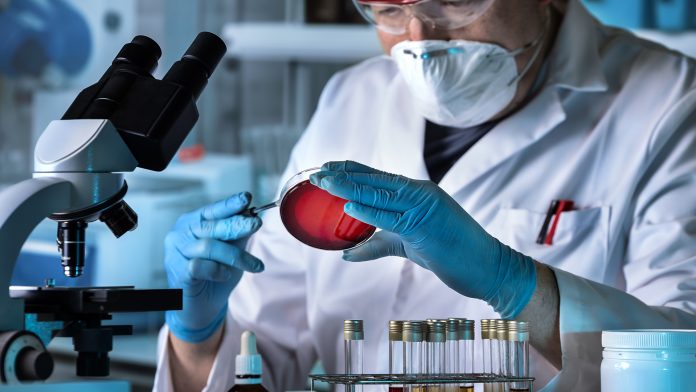New University of Liverpool research has identified a step towards a better understanding of antimicrobial resistance in hospital-acquired pneumonia.
Although antimicrobial resistance (AMR) is a growing global issue, little is known about how to dose antibiotics to minimise bacteria developing resistance in patients.
Now, the University of Liverpool is playing a significant role in contributing to international efforts to increase understanding of AMR.
In a new paper published in mBio, Dr Christopher Darlow, from the Antimicrobial Pharmacology & Therapeutics (APT) group at the University of Liverpool, outlines a new experimental animal model of hospital-acquired pneumonia (HAP).
The model tests the effect of meropenem – a commonly used antibiotic for HAP – and determines how resistance to meropenem emerges.
Hospital-acquired pneumonia accounts for 10% of hospital deaths
Lung infections are common in hospitals, with HAP accounting for around 10% of deaths in hospitals.
The type of bacteria causing HAP and the large numbers of bacteria in the lungs during hospital-acquired pneumonia mean that antimicrobial resistance is common.
This is because doses of antibiotics are determined to treat HAP effectively, however, there is little consideration of the dose needed to prevent resistance from emerging.
Detecting the emergence of resistance
The ATP group developed a new model of HAP to test the effects of meropenem.
The model has allowed the team to detect the number of bacteria in the lungs as the antibiotic is given. The emergence of resistance is also detected, including measuring the mutations in the genes of the bacteria that drive this.
AMR can be reduced by increasing the dosage
The team revealed that too low doses of meropenem treat HAP but cause a greater emergence of resistance. Resistance can be reduced by increasing the meropenem dose or by giving a second type of antibiotic at the same time.
The strategies can be used in clinical settings to reduce antimicrobial resistance.
The team mapped how the bacteria mutates and adapts to develop this resistance, providing insight into the underlying mechanisms.
Dr Darlow said: “Through this work, we have highlighted the problem of resistance development in HAP when treated by meropenem and demonstrated potential strategies to prevent this, i.e. increasing the meropenem or using a second antibiotic in combination.
“Beyond the implications for HAP, this is also a new experimental platform to allow antibiotics (both new and old) to be assessed for their ability to cause the development of resistance and identify strategies to mitigate against this.
“We hope to use this platform for other antibiotics in the future to improve the use of antibiotics and prevent antibiotic resistance development.”









